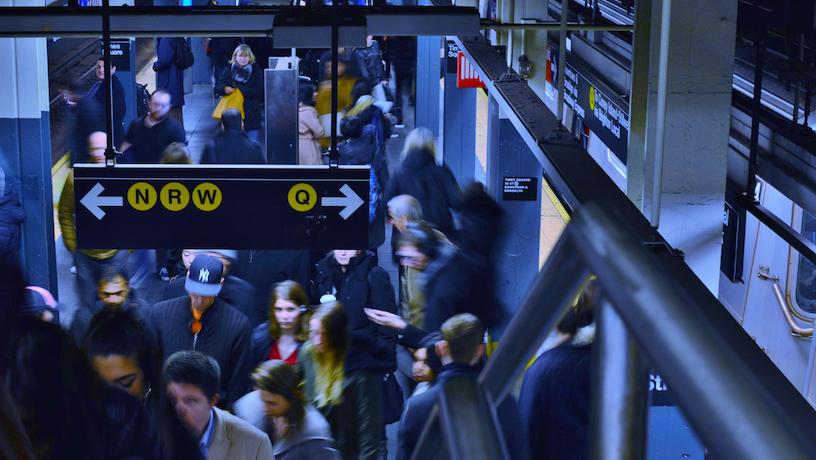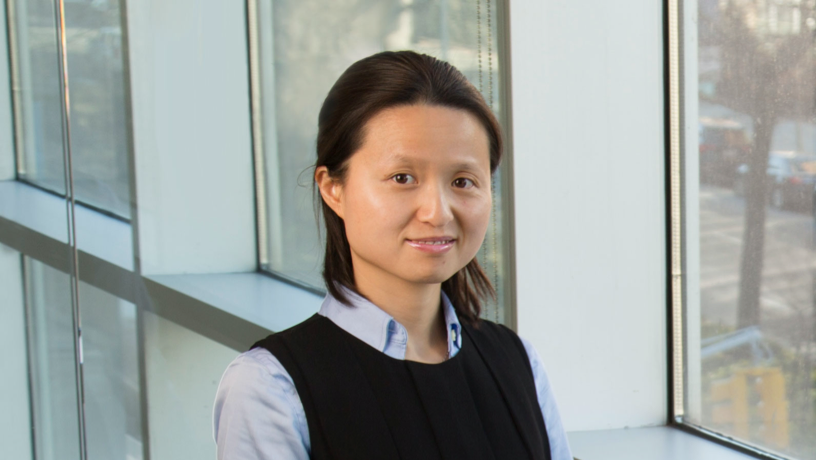Tackling Crowd Management in Subways during Pandemics
Sharon Di wins NSF grant to work with NYC’s MTA to develop machine learning and traffic models to optimize traffic flow during pandemics

Credit: Kits Pix/Shutterstock
Mass transit, and subways in particular, are essential to the economic viability and environmental sustainability of cities across the globe. But public transit was hit hard during the COVID pandemic and subways especially experienced substantial drops in ridership. Spurred on by a Columbia Engineering Transit Design Challenge in 2020, researchers from across the University have been collaborating on a project to strengthen both the preparedness and resilience of transit communities facing public health disasters.
The team, led by Civil Engineering Professor Sharon Di, recently won a $2,500,000 four-year grant from the National Science Foundation to tackle crowd management in subways. The project--”Preparing for Future Pandemics: Subway Crowd Management to Minimize Airborne Transmission of Respiratory Viruses”--is focused on developing a system for public transit communities, including riders, workers, and agencies, that will help transit riders to make informed decisions and adapt travel behavior accordingly and provide transit agencies engaged in planning and policymaking with recommendations for mitigating virus transmission risks to riders and workers.

Sharon Di
“We think our system, which we’re calling Way-CARE, will be transformative, especially for people in low-income communities who are among the most impacted by reduced accessibility to safer travel modes,” said Di, who is a leader in transportation management. “We expect our project to improve the social, economic, and environmental well-being of those who live, work, and travel within cities.”
The team, which includes Co-PIs Jeffrey Shaman (Columbia Climate School; Mailman School of Public Health); Marco Giometto, Xiaofan Jiang, and Faye McNeill (Columbia Engineering); Ester Fuchs (School of International and Public Affairs); and Kai Ruggeri (Columbia University Irving Medical Center), is working with New York City’s Metropolitan Transportation Authority and local rider communities in Harlem and at Columbia on the Way-CARE project. They hope that their system will enable smart city transit operators to access real-time sensing information collected from subway stations and/or trains for crowd management.
We think our system will be transformative, especially for people in low-income communities who are among the most impacted by reduced accessibility to safer travel modes.
The researchers are integrating sensing and crowd and airflow modeling with public health expertise on a microscale applied to subway crowd management. They are developing coupled airborne dispersion and epidemiological models that account for microscale processes--the transport of droplets and aerosols--that affect respiratory virus transmission. In addition, they are integrating behavioral science data that will help inform travel choices and policy making.
“This is an important interdisciplinary collaboration,” said Shaman, an epidemiologist who is a leader in infectious disease modeling. “The transmission of respiratory viruses is not directly observed, and the microscale processes influencing infection risk are not well known. Our project will address these shortcomings by advancing understanding of the physical, biological, and behavioral features that enable transmission of respiratory viruses in subway settings, and equip transit officials and the public with real-time information that improves worker and rider safety.”
